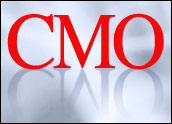
From early origins of cold-calling into purchased contact lists, to contemporary methodologies incorporating Web 2.0 enablers, companies seeking to steer highly qualified leads to their “closers” are faced today with a combination of competitive threats, information overload and hesitant buyer behavior requiring new strategies and tools to succeed. The never-ending economic pressure for sales organizations to increase productivity while “doing more with less” often results in organizational emphasis on segregating responsibilities between inside and outside sales teams.
According to research conducted by Aberdeen in September 2009 for ““Sales Training: Translating Tribal Selling Knowledge Into Bottom-Line Productivity,” companies with sales forces predominantly focused on outside selling out-performed inside-focused teams by an average of 10 percent across metrics such as sales forecast accuracy, bid-to-win ratio and customer retention. Because many enterprises cannot afford to deploy a preponderance of field reps or closers and must rely on inside resources to find, nurture and filter opportunities, new solutions that yield better performance among internal resources need to be discovered and implemented.
Additionally, for inside sales teams that report up the organizational chart to marketing leadership rather than sales, Aberdeen research conducted among attendees of the 2009 CMO Summit shows that the top two business concerns of marketing executives are new customer acquisition and up/cross-selling to existing customers. Both pressures outpace all other issues, such as improving customer experience and loyalty by 66 percent or more, and speak to the importance of targeting inside selling best practices toward achieving these top-of-mind business pressures.
The Blake School of Motivation
Few sales professionals would fail to instantly recognize the famous line from “Glengarry Glen Ross,” in which the regional sales manager played by Alec Baldwin in the movie version snarls, “Coffee is for closers!” In the cut-throat environment of commission-only sales reps vying for real estate deposits — and trying to keep their jobs — the protagonists of the story wheel, deal, cheat and lie their way toward getting their hands on “the good leads” that are held back by their manager and doled out only to the closers who end up succeeding more because of their back-stabbing internal tactics than due to displaying consistent best practices in skilled selling.
In the real world of sales, particularly in the contemporary data-rich environment, finding the veritable needle in the haystack becomes an essential science rather than political artistry. Organizations interested in empowering revenue success among their closers are wisely committing significant resources to the top of the sales funnel, both through advanced marketing techniques and in support of an inside sales organization tasked with providing an effective filter that turns suspects into prospects into opportunities.
“Inside sales” has long represented a catch-all function relied upon by marketing and sales leaders to manage both the quantity and quality of leads entering the business development funnel. In search of the ideal balance between the value and volume of sales leads that enter into the prospecting pipeline, companies apply the same calculus to their selling staff, deploying lower-cost resources to “hunt” in order to filter the best revenue opportunities to more highly leveraged closers.
The result is often a significant investment in consulting, selection / placement, and learning and development services, as well as in a wide array of enabling technologies and IT / telephony infrastructure, all geared toward pushing more revenue, more efficiently, through the enterprise. Whether the prime focus of any given selling team is on net-new customer acquisition, or an emphasis on cross- and up-selling from current clientele, the need to achieve increased sales effectiveness through a properly deployed inside sales organization becomes, for many, an essential focus of corporate strategy and budget.
Deploy the Insiders
The “golden ticket” sales leads so coveted by the “Glengarry Glen Ross” reps are introduced to us with no explanation of their source. In real-life B2B and B2C selling, of course, the acquisition of potential customer revenue begins with incredibly complex and creative marketing initiatives that crunch data, imply value, establish a personal connection with the prospect, and create a data trail that links buyer and seller. The sales process often begins with a multi-step process that continuously filters each individual record regarding their job role, industry niche, geography, company and, most importantly, the nature of their engagement with the selling organization. At some point the interaction moves from marketing technology to human contact. This is the point at which inside sales organizations are typically deployed to make contact.
Yet even if inside selling is deployed among lower-cost resources as compared to expensive closers, the cost of creating human contact between buying and selling parties is enormous compared to any automated process. It is easy to understand why a book purchase on Amazon.com needs to be handled by software, and why a multi-million-dollar technology deal must be managed by an experienced business development professional with a personal and inherently manual process. However, in between these extremes, organizations need to establish the ideal time to introduce human contact and, importantly, how to empower their inside team with processes, technologies and best practices that ensure they spend their time wisely.
Ultimately, companies seeking to succeed in the post-millennial economy will need to empower their first-contact sales staff with the tools necessary to sustain revenue and profitability through both recessionary and boom cycles, as they seek to source and win more deals from competitors and efficiently add to the revenue stream of current customers. Additional benefits of establishing measurable, manageable inside sales methodologies may also include better collaboration between marketing and sales teams, more accurate corporate revenue forecasting, and better career path development from inside to field selling.
Coming Soon
A wide variety of hardware, software, training, consulting, measurement and management tools are promoted to inside sales managers as the “magic bullet” that will turn their operation into a lean, quota-busting team driving record-breaking revenue. In December, Aberdeen’s research will objectively determine how top-performing companies choose from the crowded landscape of solutions and deploy the most effective enablers for peak inside sales performance. The research will answer questions such as:
- In what ways should performance optimization metrics differ between inside and outside sales teams?
- What is the optimal mix of outbound versus inbound activity to maximize the contribution of inside sales?
- How do technology solutions, training and compensation management tools yield success at the individual and team levels?
- When is the right time for inside sales to hand off opportunities to the “closer?”
This report will provide companies with a roadmap for leveraging the tools and methodologies for driving increased sales revenue through inside sales, considering not only the short-term need to enhance the sales pipeline, but additionally to provide long-term value to the field sales organization via career advancement between the teams. Further, the report will present specific recommendations for defining measurable goals and metrics around inside sales management, based on the performance of Best-in-Class companies.
Peter Ostrow is research director of sales effectiveness at the Aberdeen Group.

















































